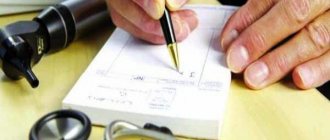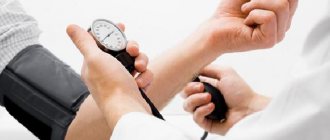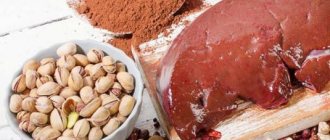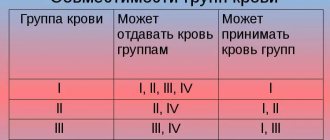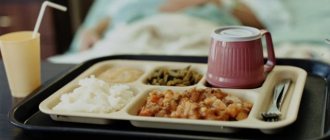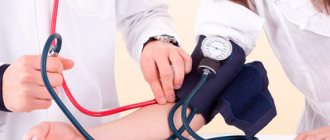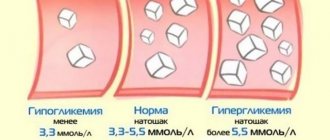Hypertensive crises are an exacerbation of hypertension, characterized by excessive stimulation of the nervous system, spasm of cerebral vessels and pain in the heart. In this condition, a person’s blood pressure rises sharply and there is a risk of a heart attack.
Stress and inherited genes are the main causes of the “epidemic” of hypertension.
According to statistics, every third person has experienced an uncomplicated crisis. After an exacerbation, it is imperative to monitor your nutrition and follow a diet.
Dietary recommendations
Recommendations for nutrition after a hypertensive crisis should be made by a cardiologist. The specialist focuses on indicators of blood tests, urine tests, ultrasound and cardiogram.
A diet during a hypertensive crisis helps to normalize blood pressure, preventing heart attack and stroke.
The menu must be carefully thought out:
It is necessary to exclude foods that lead to flatulence and bloating. Avoid salty and spicy foods. Do not drink a lot of carbonated water and coffee. Eliminate fatty meats from your diet. You can eat fresh fruits, boiled and raw vegetables, water porridge, and lean fish.
It is very important to monitor the amount of table salt in your food.
It is best to abandon it altogether or keep it to a minimum. Instead, add garlic and dietary spices. Before going to bed, you should not load your stomach with food. Eat small portions, but at least five times a day.
Rosehip to the rescue
For drinks, you should definitely drink rosehip infusions. It is best to take it before bed.
In combination with diet and medications, this is an excellent adjuvant that helps normalize blood pressure.
Rose hip decoction is prepared as follows. A small amount of berries is poured with boiling water, brought to a boil and left for about twenty minutes. You cannot boil for a long time, otherwise the berries will lose their healing properties. You can also pour the fruits overnight and leave them in a thermos until the morning. In the morning, the infusion must be heated.
It is very good to add other components to the decoction: aloe, pine needles, onion, hawthorn, chokeberry.
Diet No. 10
For hypertension, you need to pay attention to diet No. 10. It excludes the use of table salt, which retains fluid and causes swelling. Reduces the amount of liquid you drink per day to a liter.
Products must contain polyunsaturated acids (seafood, fish). Also, after a crisis, the stomach needs to be unloaded and during these days you need to eat fruits, vegetables, as well as some cereals.
This diet for high blood pressure is often prescribed in hospitals to patients with high blood pressure.
Diet principles
If a hypertensive crisis occurs, a diet in this case will help alleviate the patient’s condition and reduce the dosage of prescribed medications. Basic principles of dietary nutrition:
- Eating foods high in vitamins C, B and microelements - potassium, magnesium and calcium.
- Complete absence of junk food - processed foods, fast food, sweet and carbonated drinks.
- The amount of liquid consumed is reduced to a minimum; water is drunk only when thirst arises.
- The serving size is small, no more than 350 g.
- Fractional meals - you need to eat food often, the maximum break between meals is no more than 4 hours.
- The basis of dietary nutrition is products of plant origin, dairy and fermented milk products. Kefir or yogurt is the best snack option; it is recommended to consume a glass of fermented milk product every day before bed.
It is also necessary to monitor the caloric intake of food per day. The number of calories should not exceed the energy expended. This means that you cannot create a calorie deficit, but their number should not exceed their consumption.
People with hypertension need to give up spices and herbs, which increase blood flow and often cause increased blood pressure. Instead of spices, it is recommended to add dried herbs to prepared dishes. As a spice, you can add a little bay leaf to dishes when preparing them.
Doctors recommend completely avoiding salt, which causes excess fluid to accumulate in soft tissues, resulting in increased blood pressure, and in people with hypertension, the likelihood of a hypertensive crisis increases. If you cannot eat food without salt, it can be used, but in limited quantities.
Important information: How is renal arterial (renovascular) hypertension syndrome (hypertension) treated and symptoms of the disease
Prohibited products
Many people neglect dietary restrictions, and in the meantime, toxins and waste accumulate in their bodies.
Foods that should not be consumed if you have high blood pressure:
- Desserts with cream;
- Strongly brewed tea, caffeine, alcohol;
- Fatty meats;
- Canned food;
- Pastries, bread;
- Dairy products should also be excluded;
- Pasta and semolina are not recommended for cereals;
- It is better to reduce chocolate, ice cream, and sugar consumption to a minimum or eliminate it;
- Sauces (including mayonnaise and mustard)
- Fatty broths;
- Mushrooms;
- Grape;
- Radish and radish;
- Legumes are not completely excluded, but are reduced to a minimum;
- Smoked meats
You need to know that your diet should not contain a lot of carbohydrates and fats. Hypertensive patients should completely avoid spicy and salty foods.
Reviews and results
Dietary nutrition for hypertension, according to patient reviews, is an effective treatment method that helps normalize blood pressure. In general, the diet is well tolerated, but some patients suffer from low-salt foods, lack of smoked meats, and limiting sugar and sweets.
- “...Initial stage hypertension. After the diagnosis, I was very worried that I would repeat the problems of my parents. They are chronic hypertensives. I studied the literature available to me, re-read the forums on the topic: high blood pressure, nutrition for hypertension. I immediately decided for myself that I would not start the problem. A relative, a general practitioner, described everything to me. She prescribed diet 15, but with a small amount of salt, and advised me to get used to eating everything lightly salted and forget about pickles, marinades, and smoked meats. She also advised me to change my lifestyle, start moving actively, since I work at the computer all day, constantly monitor my weight, and stop even occasional smoking. Almost six months have passed, so far everything is working out, the pressure has been stabilized, and at the same time I have lost weight”;
- “...Hypertensive patient with extensive experience. In addition to taking medications, a low-salt and sometimes salt-free diet is very helpful. At first, I couldn’t get used to eating unsalted food for a long time, I was drawn to the usual sausages and ham, I wanted salted fish and cucumbers. But over time I got used to it, learned to add flavor to dishes with garden herbs, garlic, mild herbal spices, and dried fruits. Now I practically do not suffer from lack of salt. In addition, a salt-free diet helped normalize body weight, and shortness of breath disappeared. I try to lead a healthy lifestyle, practice physical activity (walking in the park), and ride a bicycle. This is how I have maintained my health for almost 10 years.”
Healthy foods
What foods can and should be eaten to maintain health after complications and high blood pressure?
- Cereals;
- Light vegetable soups without potatoes or with a small addition of them;
- Muesli;
- Light grains: buckwheat, millet, pearl barley, rice.
- Egg white;
- Natural yoghurts without additives or flavorings, kefir.
- From meat - chicken and turkey, boiled or steamed.;
- Slightly dry bread;
- Dried fruits, compote, jelly;
- Weak tea;
- The fruits of hawthorn and rose hips.
Speaking about hawthorn, it is necessary to note its beneficial properties for the cardiovascular system. It strengthens the heart muscle and helps avoid various heart diseases.
Also, teas and decoctions with the addition of dried plants are used to lower cholesterol, treat arrhythmia, eliminate insomnia and reduce fatigue and stress.
The effect of alcohol on the body with hypertension
Alcohol causes blood vessels to dilate and increase blood pressure. But, at the same time, small amounts of it will not cause significant harm in case of hypertension; on the contrary, they will help improve the condition.
Reasonable doses of alcohol improve the function of the gastrointestinal tract and the general condition of the body, prevent heart and vascular diseases - “accompanying” hypertension.
Important! An exception to the permissibility of alcohol is diastolic hypertension (high blood pressure), in which alcohol is prohibited!
People with high blood pressure can drink ½ liter of beer, 200 ml of wine or 50 ml of strong alcohol per day.
Sample menu after the crisis
Only a balanced diet can help improve your condition! Allows you to reduce blood pressure and reduce the risk of re-exacerbation.
A diet after a hypertensive crisis will help cleanse the body of toxins and harmful toxins.
All products must be fresh. It is recommended to add greens, herbal infusions and teas (rose hips, chamomile) to the main diet. You can use sour cream or natural unsweetened yogurt as a salad dressing.
Sample menu after a hypertensive crisis:
First option
| Breakfast | Oatmeal with fruits: banana, apple, peach. Green tea |
| Lunch | Baked apples with honey |
| Dinner | Buckwheat with stewed vegetables (zucchini, carrots, onions, broccoli) Fish Kissel |
| Afternoon snack | A handful of dried apricots |
| Dinner | Light chicken cutlets (steamed or stewed) or baked fish Rose hip broth |
Second option
| Breakfast | Freshly squeezed juice Muesli |
| Lunch | Natural yogurt without additives |
| Dinner | Vegetable soup, a piece of dried bread Kompot |
| Afternoon snack | Banana |
| Dinner | Light pilaf with vegetables (rice should be long grain) or fish Kefir |
Third option
| Breakfast | Fruit salad with yoghurt dressing Weak tea |
| Lunch | Apple |
| Dinner | Wheat porridge with pumpkin, a piece of fish Freshly squeezed fruit juice |
| Afternoon snack | Handful of nuts |
| Dinner | Broccoli soup puree Rosehip infusion |
Fourth option
| Breakfast | Cottage cheese with honey Mors |
| Lunch | Yogurt |
| Dinner | Steamed vegetable cutlets, beetroot soup Green tea |
| Afternoon snack | Jelly with fruits |
| Dinner | Boiled fish, light salad Compote |
For hypertensive patients, it is useful to prepare fish soup, baked potatoes, casserole (especially cottage cheese and pumpkin), cottage cheese soufflé as a dessert, vinaigrette, baked fish, vegetable stew.
A balanced diet and limiting fatty, salty foods and carbohydrates will help normalize blood pressure in 80% of cases.
Allowed foods during a hypertensive crisis: what can you eat?
Having received a diagnosis of “hypertensive crisis”, it is necessary to review and adjust the diet. Hypertensive patients can eat:
- Lean meat: chicken, turkey, veal, beef and rabbit.
- Sea cabbage and seafood (especially lean fish).
- Low-fat dairy products are beneficial.
- Fruits and vegetables (cabbage, carrots, beets), herbs. They help reduce cholesterol levels and improve food digestion.
- Various cereals will be useful.
- Dried fruits are rich in antioxidants and heart-healthy elements - potassium and magnesium.
Prevention methods
And as a preventive measure to prevent hypertensive crises, it is necessary:
- follow diet number 10;
- avoid overexertion, fatigue, stressful situations;
- give up cigarettes and alcohol;
- temper yourself and do daily exercises.
- perform exercises from the exercise therapy system.
Only complex therapy and compliance with all recommendations will help restore the proper functioning of the cardiovascular system.
Proper nutrition and diet after a hypertensive crisis is a whole range of measures.
If the patient finds it difficult to create his own regimen, it is better to consult a general practitioner for help. Author of the article Svetlana Anatolyevna Ivanova, general practitioner
What is forbidden to eat?
Experts recommend that during a hypertensive crisis, avoid foods that increase cholesterol levels in the body and provoke vascular spasms. In each specific case, we consider separately what can and cannot be eaten. But the general list of prohibited products is as follows:
- fatty (whether meat, fish or milk);
- everything smoked and lard;
- beans;
- butter, cheese and sauces;
- fast food;
- baked goods and sweets (especially chocolate);
- strong teas and coffee;
- soda and alcohol.
Return to contents
Recipes for hypertensive patients
A diet for high blood pressure can be not only healthy, but also tasty. And the dishes are quick to prepare. Here are some recipes:
- Fish soups. Add diced potatoes, finely chopped onions and carrots, and rice to boiling water. After 20 minutes, add canned fish to the broth (canned mackerel or saury are suitable) and cook for 10 minutes. At the end of cooking, add vegetable oil.
- Fish cutlets. Pass the sea fish through a meat grinder, add onion and bread. Mix the minced meat with spices and form into cutlets. Fry in vegetable oil, first rolling in flour. Pour the finished cutlets with fish broth and simmer in the oven for 20 minutes. Steamed cutlets will be healthier and tastier.
- Lean meat pilaf. It is prepared like a regular one. The advice for hypertensive patients is to use as many vegetables and less fat as possible.
- Salads. Here you can improvise, using any vegetables as a base, and sunflower, olive, corn oil, lemon juice or low-fat yogurt as a dressing.
- Dessert. Various compotes, jelly, fruit and berry jelly. Fruits baked in the oven or microwave. You can prepare fortified jam in a few minutes: mix chopped fruit with a small amount of sugar and leave for 10 minutes. microwave (stirring every three minutes).
From time to time you need to arrange a fasting day. This will help remove excess fluid from the body, lose weight and bring blood pressure back to normal. You can do an apple day (eating 1.5 kg of fruit in five meals), cucumber day (5 meals of 300 g of cucumbers) or kefir day (1 liter of kefir and 0.4 kg of cottage cheese per day). It will be useful to eat only dried apricots for one day - 0.5 kg (divide 100 g for each meal). Hypertensive patients must drink 2 liters of water every day. You need to give up salt or reduce its amount in dishes. Plus, using the steam cooking method is healthier. And don’t forget about medications. All this, together with the treatment prescribed by the doctor, will help the person cope with the disease and prevent its recurrence. It is very important to forget about the correct daily routine, proper sleep, absence of stress and bad habits.
Basic principles of diet
With such a dangerous phenomenon as a hypertensive crisis, diet is the key to quickly normalizing the patient’s condition. For people suffering from diseases of the cardiovascular system, doctors recommend sticking to table number ten. You need to eat small meals, since a crowded intestine puts pressure on the diaphragm, which makes it difficult for the entire cardiovascular system to work.
Let us list the basic principles of therapeutic nutrition:
- per day you are allowed to consume no more than 90–100 grams of proteins, 70 g of fats and 350–400 g of healthy carbohydrates;
- the maximum volume of liquid during the recovery period is 1.2 liters, including compote, jelly, soup and other liquid dishes. After passing the acute stage, the rate can be increased to 1.5–2 liters;
- daily food weight should not exceed 2.5 kg;
- salt must be strictly limited, its maximum amount should not exceed five to seven grams per day;
- the regimen can include from four to six meals, the last one should take place no later than two hours before bedtime;
- You should give preference to preparing your own food from fresh products - store-bought food contains too much salt, which a hypertensive patient does not need.

